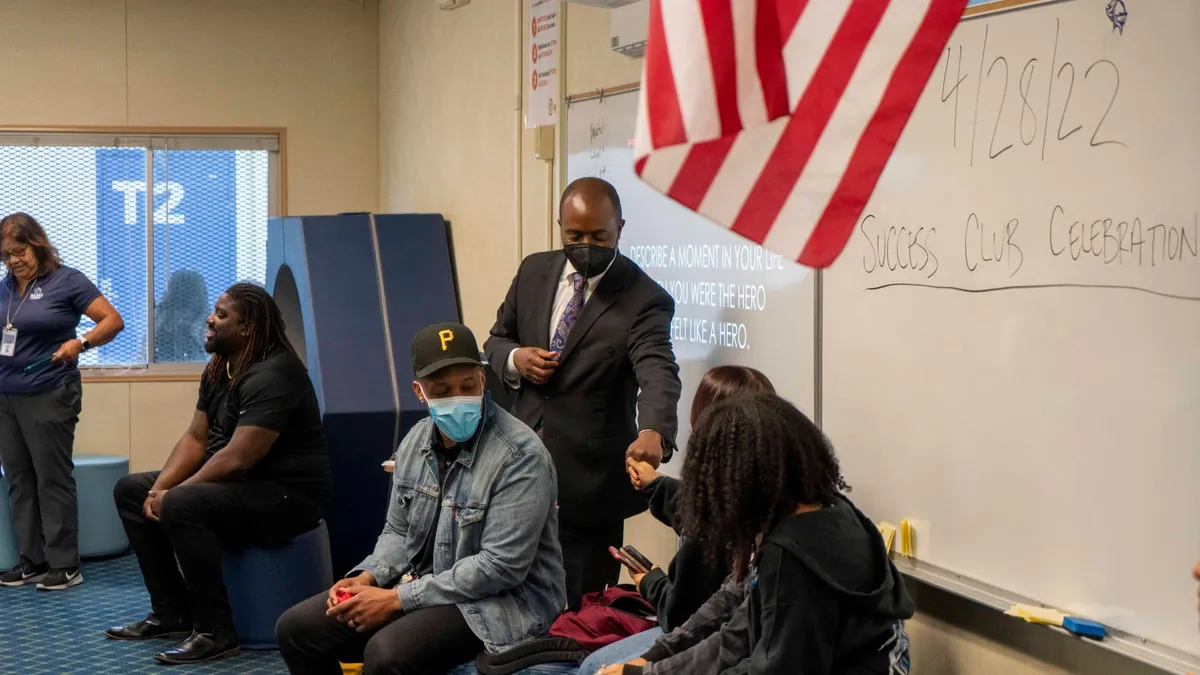Last month, the Washington Post reported that the U.S. Department of Education's Office of Civil Rights has been facing record numbers of complaints. The caseload — which has doubled since 2007 — has put such strains on the department that it asked for an additional $30.7 million in funding so that it could hire an additional 200 investigators and lawyers in the next fiscal year.
While most media attention around DOE complaints deals with the very real problem of campus sexual assault, violations of Title IX in higher ed are not the department's only focus. There are numerous reports of discrimination in K-12, many of which fall under Title VI. In fact, discrimination based on disabilities makes up nearly 40% of the complaints.
The fact that these cases are not getting as much media attention does not mean they are unimportant. In fact, what often happens is schools and families are unaware that they have a right and duty to file discrimination complaints. Let's take a look at the eight subsections of Title VI and some K-12 cases that were recently resolved by the department, as understanding these problems (which cover a wide range of discrimination issues) in other schools is beneficial for recognizing and mitigating issues in districts nationwide.
Admissions
Admissions cases run the gamut. One such case dealt with the Lower Merion School District in Pennsylvania, where families in the community argued that the school's redistricting plan violated the 14th Amendment's Equal Protection Clause. They argued that the plan divided a predominantly black community in half, creating two "attendance zones." In one, students could attend either of two high schools, while the other required students to be bused to the school that was farther away. The OCR decided that the first allegation (that the redistricting plan was discriminatory) did not hold weight, agreeing with prior judgments by both a district and a third circuit court. It did say, however, that it was looking into a second allegation: whether or not disability discrimination has occurred with the restructuring.
Another very different example of a recently resolved OCR admissions case comes from Fairfax County, VA, where a complaint was made that Fairfax County Schools Division unfairly favored black students over their white peers when making admissions decisions for Thomas Jefferson High School for Science and Technology. According to the OCR, the case was based on statistics and "did not identify any particular individuals that may have been treated differently on the basis of their race."
In its resolution letter, the OCR pointed out that factors other than grades, such as leadership, can impact admissions, but also that "the use of race as a factor in admissions, in and of itself, is not a violation of federal law." The district can use race to make decisions if it does so within the limitations of the law, for reasons that would stop racial isolation in schools and promote diversity. That said, the OCR still conducted an investigation, concluding, "Based on the above discussion, there is insufficient evidence to find that the Division considered race as a factor in its admissions to the School in 2002."
Discipline
In November 2009, 11 white and Somali-American students at Independent School District No. 761 in Owatonna, MN, got into a fight. Afterwards, a complaint was filed finding that the Somali-American students were disproportionately punished, and there was also little done by the administration to get to the root of and mitigate the bullying against these students.
Ultimately, the OCR investigated the case and found the complaint was valid. From there, it entered into a resolution with the district, holding it to the expectation that it will handle future punishment proportionately. The district also agreed to "improve its policies and procedures concerning harassment and discipline as necessary to make them effectively protect students from racial or national origin-based harassment." Part of that promise included a plan to meet with high school Somali students to discuss their concerns about harassment.
English Language Learners
In 2011, the OCR resolved a complaint against Ohio's Cleveland Metropolitan School District, where parents categorized as limited-English proficient national origin minorities (LEP) were not receiving information about extracurricular activities and school-related info an a language they understood. In one instance, a LEP family was not given information about their child's expulsion. Even before the OCR finished its investigation, the school entered a voluntary resolution agreement where it promised to provide language assistance to LEP parents, as well as a plan for how it could and would notify those families about events and important information.
Financial Aid
No K-12 examples
Harassment
The Owatonna, MN, discipline case involving Somali-American students was also filed as a harassment case. The department's agreement was created to resolve the issues on both fronts.
Another harassment case filed against Richmond Heights Local School District in Ohio found that black student athletes "were subjected to a racially hostile environment and the District failed to address the harassment." It also found that the district "denied these same students assistance with obtaining athletics scholarships" and that the complainant and her son were retaliated against after filing their complaint. Based on the findings, the district agreed to a resolution where it would reassess and revise its policy for harassment and train staff, students, and board members on racial harassment. It also agreed to create a high school student committee and an advisory committee comprised of parents, students, and staff that would review harassment cases and monitor school climate.
Special Programs
A complaint was filed against Indian Prairie School District in Illinois, alleging that it violated Title VI by operating UPward, a mentoring program that targeted black and Latino students. The complaint alleged that the program was "race-themed" and therefore discriminatory to other students. Ultimately, the OCR disagreed with the allegation, saying its investigation didn't turn up enough evidence that the district was non-compliant with the rules of Title VI.
Race-Neutral Alternatives
No K-12 examples
Retaliation
The Richmond Heights, OH, case also fell under retaliation.
Would you like to see more education news like this in your inbox on a daily basis? Subscribe to our Education Dive email newsletter! You may also want to read Education Dive's look at 5 tips for mitigating bullying in schools.


















